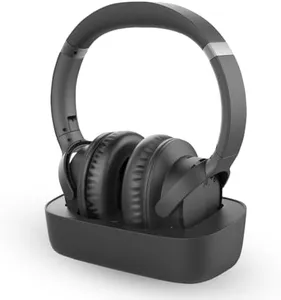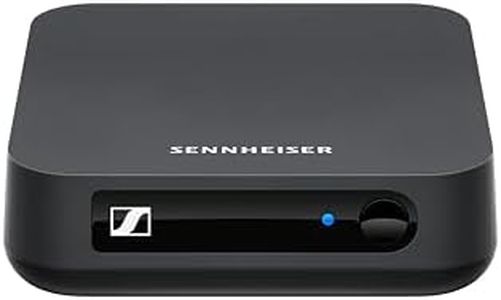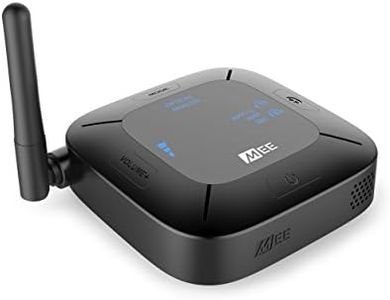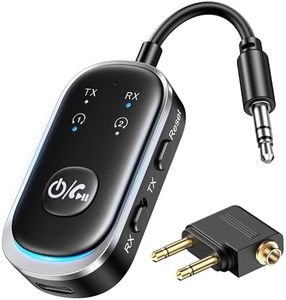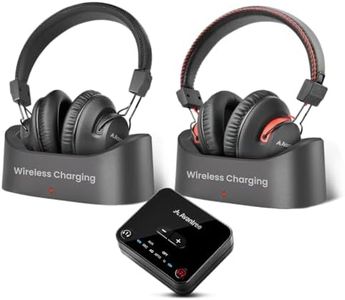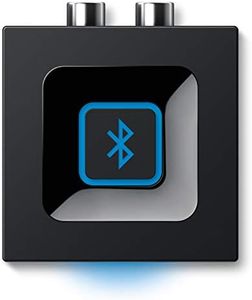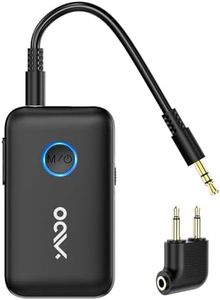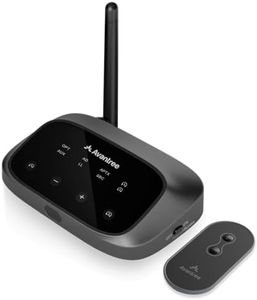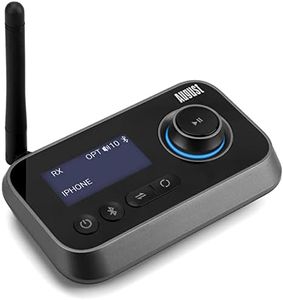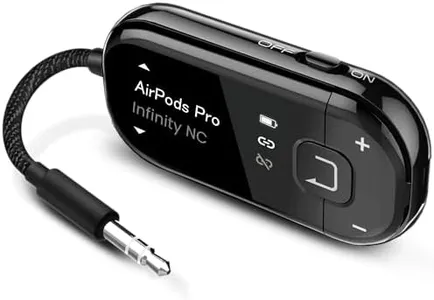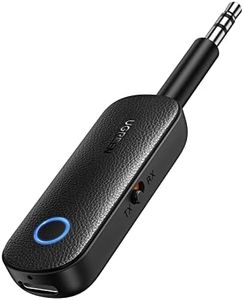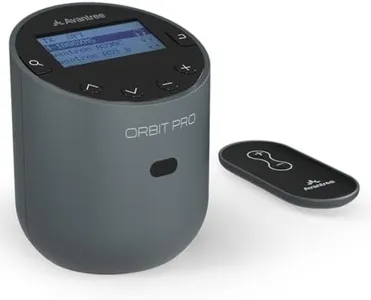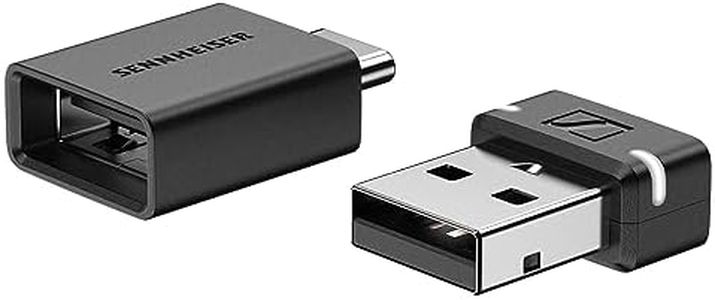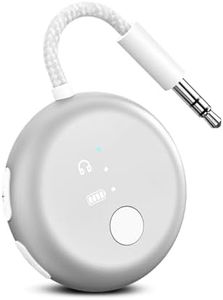We Use CookiesWe use cookies to enhance the security, performance,
functionality and for analytical and promotional activities. By continuing to browse this site you
are agreeing to our privacy policy
10 Best Bluetooth TV Adapters
From leading brands and best sellers available on the web.Buying Guide for the Best Bluetooth TV Adapters
Choosing a Bluetooth TV adapter is an excellent way to enable wireless audio streaming from your television to headphones, speakers, or soundbars. With so many adapters available, it's important to understand how their features and specifications match your needs, such as audio quality preferences, connectivity options, and home setup. By considering key specs and knowing how they relate to your usage habits, you'll find an adapter that fits seamlessly into your entertainment space.Bluetooth VersionBluetooth version refers to the specific standard supported by the adapter, like Bluetooth 4.2, 5.0, or newer. This spec is important because higher versions tend to offer better range, faster data transfer, and improved energy efficiency. Adapters with Bluetooth 5.0 and above typically provide strong connections up to 30 meters and have better compatibility with modern headphones and speakers. If you only need to transmit audio a short distance in a small room, an older Bluetooth version might suffice, but for more flexibility, reduced latency, and future-proofing, aim for a newer Bluetooth standard.
Audio Codec SupportAudio codecs are technologies that determine how sound is compressed and transmitted over Bluetooth. Common codecs include SBC (basic), aptX, aptX Low Latency, and AAC. This spec is important because certain codecs reduce audio delay (latency) and improve sound quality, which can be especially beneficial for watching TV and gaming where lip-sync matters. If you want the clearest sound with minimal delay, look for adapters supporting aptX Low Latency; for general listening, basic codecs may be sufficient. Match the adapter's supported codecs with those of your headphones for the best experience.
Input and Output InterfacesThe input and output interfaces describe how the adapter physically connects to your TV or audio system—common options are 3.5mm AUX, RCA, optical (Toslink), and USB. This spec is crucial because your TV may have only certain types of audio outputs. For older TVs, RCA and 3.5mm might be necessary, while newer sets usually have optical outputs. Before buying, check what your TV supports and choose an adapter that matches, so setup is smooth and hassle-free.
Transmission RangeTransmission range measures how far the adapter can send a Bluetooth signal before it starts to cut out, usually given in meters or feet. This is important if you need to use your headphones or speakers at a distance from your TV. Short-range adapters (up to 10 meters) are fine for most living rooms, but for larger spaces or more flexibility, look for something rated up to 30 meters. Think about your room size and where you’ll be listening from to decide how much range is enough.
Dual Link CapabilityDual link (also called multipoint or dual device support) means the adapter can transmit audio to two Bluetooth devices simultaneously, like two pairs of headphones. This feature matters if more than one person wants to listen wirelessly at the same time. If you often watch TV with someone else, choose an adapter with dual link. If you’ll listen alone, this feature may not be necessary.
Power SourcePower source refers to how the adapter is powered, typically by USB, built-in rechargeable battery, or AC adapter. This spec matters for where and how you plan to use the device. USB-powered adapters can plug into your TV’s USB port if available, making installation tidier; battery-powered units are more portable; and AC-powered ones might deliver more consistent performance but require an outlet. Think about your power outlets, TV design, and whether portable use is important.
